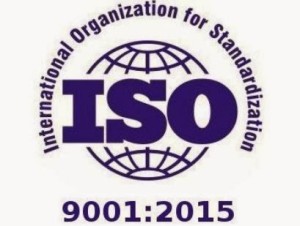ISO 9001:2015: An Overview
8 July 20, 2016 by admin · Filed under: Articles, News, Training and Seminar
 ISO 9001 is the world’s most popular and most commonly used standard for quality management system. To keep it current and relevant for the marketplace, its revision was published late last year – ISO 9001:2015. All ISO standards are reviewed every five years to establish if a revision is required to keep it up-to-date and on trend. Thus, the revised version is designed to respond to the latest trends and be compatible with other management systems.
ISO 9001 is the world’s most popular and most commonly used standard for quality management system. To keep it current and relevant for the marketplace, its revision was published late last year – ISO 9001:2015. All ISO standards are reviewed every five years to establish if a revision is required to keep it up-to-date and on trend. Thus, the revised version is designed to respond to the latest trends and be compatible with other management systems.
The ISO 9001:2015 revision had undergone different stages before it was officially published last year. It was proposed on May and June 2012 then had its preparation from June to October of the same year. It was forwarded to the committee stage and the process started from June to October of 2013. On the year 2014, it was processed in the enquiry stage from May to October. Then it was approved on July 2015 and finally published on September 2015.
This new version of ISO 9001 follows a higher level structure to make it easier to use in conjunction with other management system standards, with increase importance given to risk. It is less prescriptive than its predecessor, focusing instead on performance. This was achieved by combining the process approach with risk-based thinking, and employing the Plan-Do-Check-Act cycle at all levels in the organization.
Before releasing the new edition of ISO 9001, it underwent through many processes because the organization wanted to publish more concrete and polished version of ISO 9001; conforming to the latest trends and modern needs. The ISO 9001:2015 replaces previous editions and certification bodies and organizations are granted a three-year transition period to migrate their certificates to the new version.
